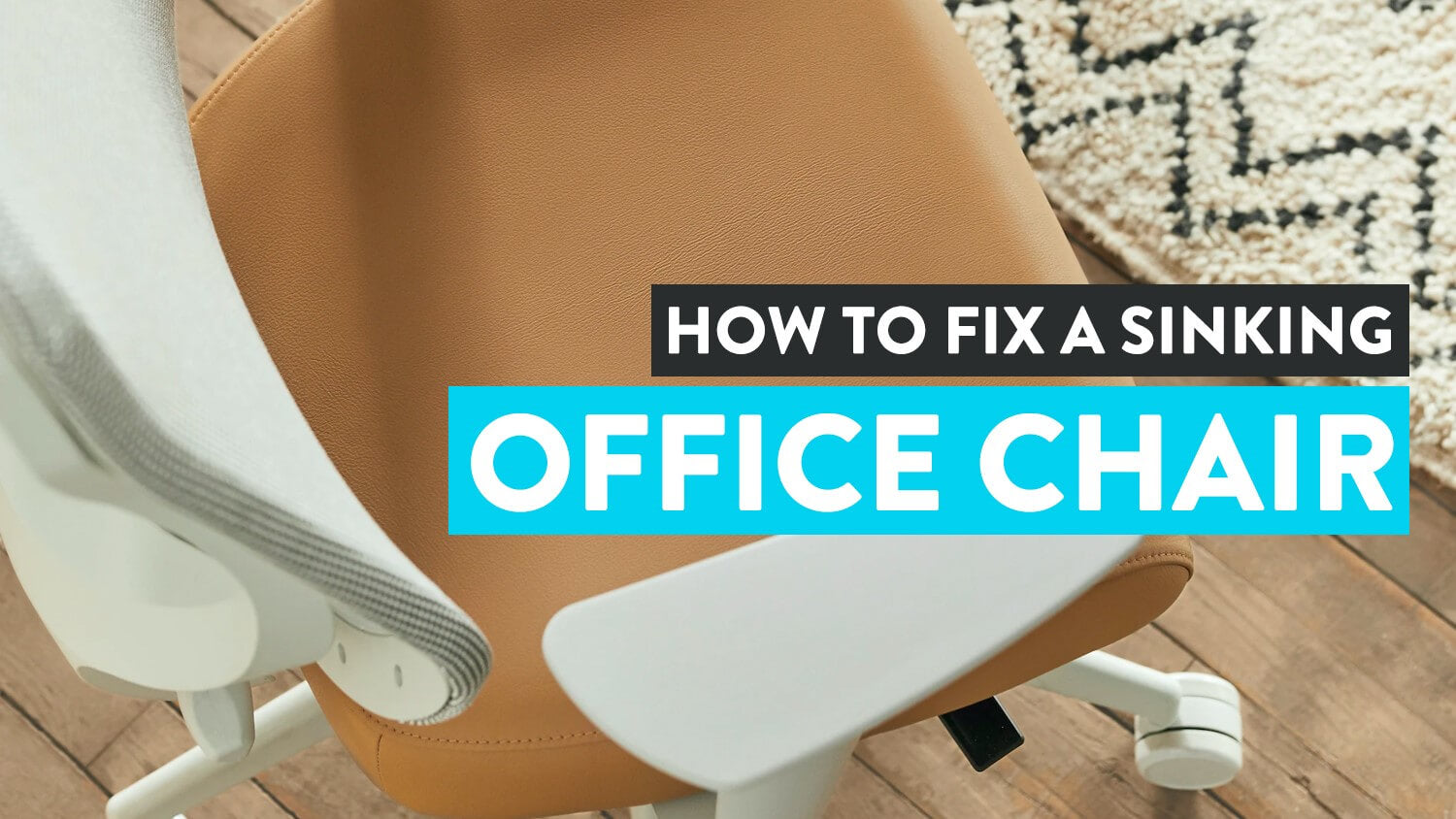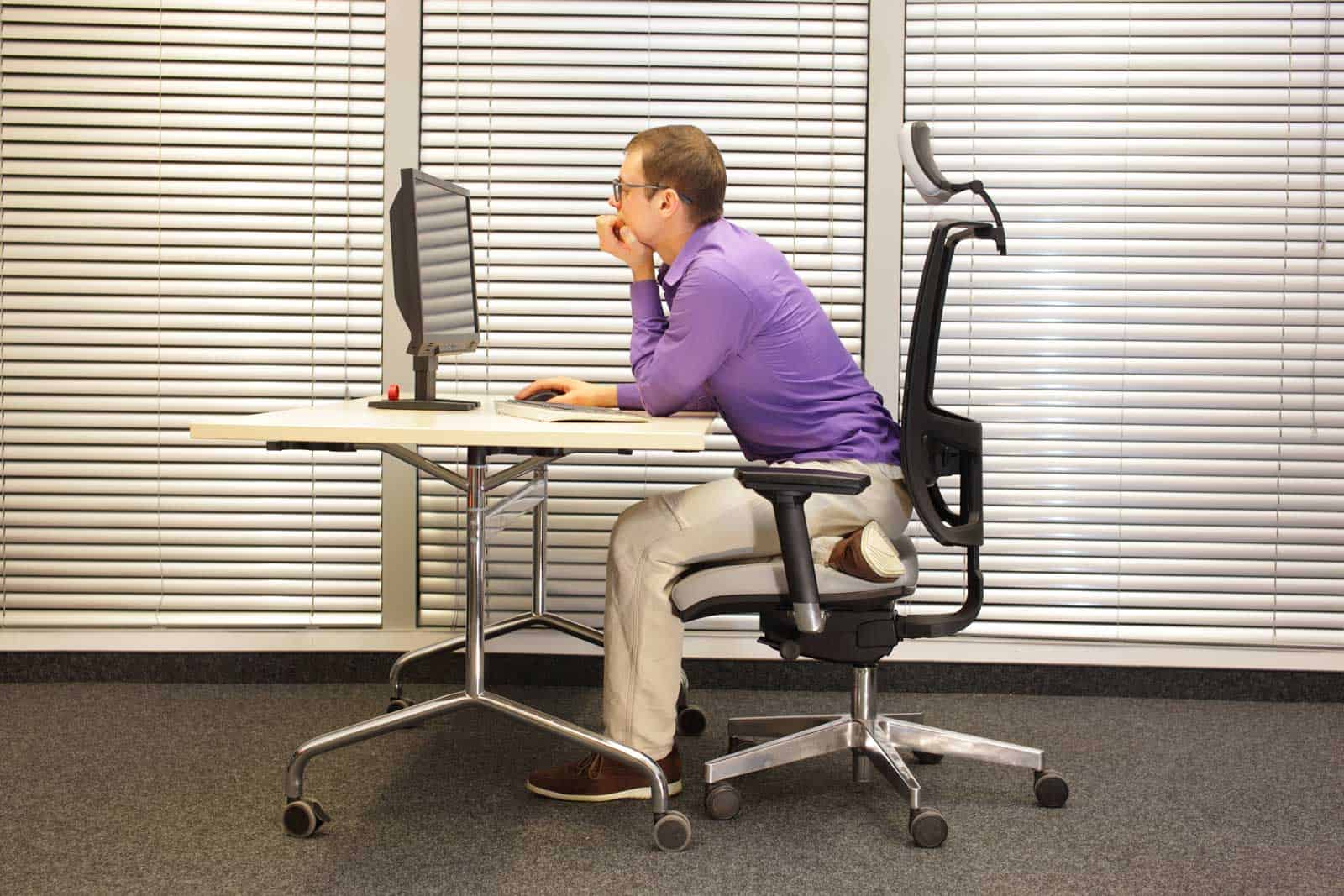The Mechanics of a Sinking Desk Chair

A slow descent, a gradual yielding – the sinking desk chair, a silent testament to time and wear. It whispers tales of countless hours spent hunched over keyboards, a slow surrender to gravity’s persistent pull. The mechanisms within, once robust and responsive, now sigh under the weight of accumulated stress.
Desk chair slowly sinks – The gradual sinking of a desk chair is often a slow, creeping tragedy, a subtle erosion of support that only becomes truly noticeable after prolonged use. It’s a symptom, not a sudden failure, a melancholic decline mirroring the wear and tear of daily life. This decline can be attributed to several factors, each playing a part in the chair’s eventual surrender.
Causes, Symptoms, and Solutions for a Sinking Desk Chair
Understanding the root cause of a sinking desk chair is crucial for effective repair or replacement. The following table categorizes common causes, their observable symptoms, and possible solutions. The solutions offered are general guidelines and may not apply to all situations. Professional assistance may be required for more complex issues.
| Cause | Symptoms | Potential Solutions | Notes |
|---|---|---|---|
| Gas Cylinder Failure | Slow, gradual sinking; inability to adjust height effectively; hissing sound when adjusting. | Replace the gas cylinder. | This is the most common cause. |
| Worn-Out Components | Creaking sounds; loose screws; noticeable sagging in the seat or backrest. | Tighten screws; replace worn-out parts (e.g., casters, foam padding). | Regular inspection can prevent this. |
| Internal Mechanism Damage | Sudden sinking; inability to adjust height; unusual noises. | Professional repair or chair replacement may be necessary. | Internal damage can be difficult to repair at home. |
| Foam Degradation | Loss of support and comfort; flattening of the seat cushion. | Replace the foam padding. | Foam degrades over time, losing its resilience. |
Comparison of Desk Chair Mechanisms, Desk chair slowly sinks
The type of mechanism employed significantly influences a chair’s longevity and susceptibility to sinking. Pneumatic and hydraulic systems, while both designed for height adjustment, exhibit different vulnerabilities.
- Pneumatic Mechanisms: These rely on compressed gas (typically nitrogen) within a cylinder. They are prone to slow leaks over time, leading to gradual sinking. The gas cylinder seal is a critical component and its degradation is a common cause of failure.
- Hydraulic Mechanisms: These use hydraulic fluid to control height adjustment. While generally more durable than pneumatic systems, they can still fail due to leaks or internal component wear, resulting in sinking or inconsistent height adjustment.
Materials Degradation and its Impact
The materials used in desk chair construction play a crucial role in its overall lifespan and resistance to sinking. Over time, these materials degrade, compromising the chair’s structural integrity and contributing to the slow descent.
Imagine a worn-out gas cylinder. The smooth, metallic surface, once gleaming and airtight, is now pitted and scratched. A once-impermeable seal is compromised, allowing the pressurized gas to slowly escape. This slow leakage translates into a gradual sinking of the chair, a silent testament to the relentless march of time and the inevitable wear and tear on even the most robust of components. The cylinder itself might be visibly dented or corroded, further diminishing its ability to maintain pressure. This visual representation highlights how material degradation directly impacts the functionality and stability of the chair, transforming a supportive work companion into a precarious perch.
Repair and Prevention Strategies: Desk Chair Slowly Sinks

The slow, agonizing descent of a desk chair, a silent surrender to gravity, mirrors the quiet despair of neglected things. To restore its upright dignity, and to prevent future collapses, requires a careful hand and a keen eye. This is not merely a repair; it is a reclamation, a return to functionality, a small victory against the relentless march of entropy.
Repairing a Slowly Sinking Desk Chair
The sinking sensation often stems from weakened or broken components. A methodical approach, combining observation with practical action, is key to successful repair.
- Identify the Problem Area: Begin by carefully inspecting the chair. Is the sinking localized to one leg, or is the entire seat giving way? Examine the chair’s base, paying close attention to the gas cylinder (if applicable), the caster wheels, and the connections between the seat and the base. Imagine a visual representation: a close-up shot, highlighting any cracks, worn areas, or loose screws. Notice the subtle creaks and groans as you shift your weight. This visual and auditory inspection provides crucial clues.
- Sourcing Replacement Parts: Once the faulty component is identified, finding a suitable replacement is the next challenge. If it’s a standard part, such as a caster wheel or a screw, local hardware stores are often a good starting point. For specialized parts, such as a gas cylinder or a specific type of chair mechanism, contacting the manufacturer or searching online retailers may be necessary. Picture this: a neatly organized parts list from the manufacturer’s website, or a detailed image showcasing the various replacement parts available from an online vendor.
- Carrying Out the Repair: The repair process itself varies depending on the problem. A loose screw simply requires tightening. A broken caster wheel necessitates replacement. A faulty gas cylinder may require professional attention. Visualize a step-by-step guide, with clear illustrations showing the proper technique for each repair type. For example, replacing a caster wheel involves removing the old wheel, inserting the new one, and securing it with the appropriate fastener. This methodical process brings a sense of order to the chaos of a failing chair.
Preventative Maintenance of Desk Chairs
Regular maintenance is the best defense against the slow, inevitable decline. A little care can go a long way in extending the life of your chair and preventing the heartache of a sudden collapse.
- Regular Cleaning: Dust and debris can accumulate in the chair’s mechanisms, leading to friction and wear. Regularly cleaning the chair with a damp cloth helps prevent this. Imagine a clean chair, gleaming under soft light, its surfaces free of dust and grime. This simple act of cleaning not only maintains its appearance but also its functionality.
- Lubrication: Applying a small amount of appropriate lubricant to moving parts, such as the chair’s mechanism, can reduce friction and extend its lifespan. Visualize a small can of lubricant, carefully applied to the moving parts, ensuring smooth, silent operation. This act of lubrication prevents the grinding and groaning that often precedes a chair’s demise.
- Regular Inspection: Periodically inspect the chair for signs of wear and tear, such as loose screws, damaged parts, or excessive wear on the casters. Imagine a thorough inspection, a meticulous examination of every component, a proactive approach to prevent future problems. Early detection of problems allows for timely intervention, preventing small issues from escalating into major repairs.
